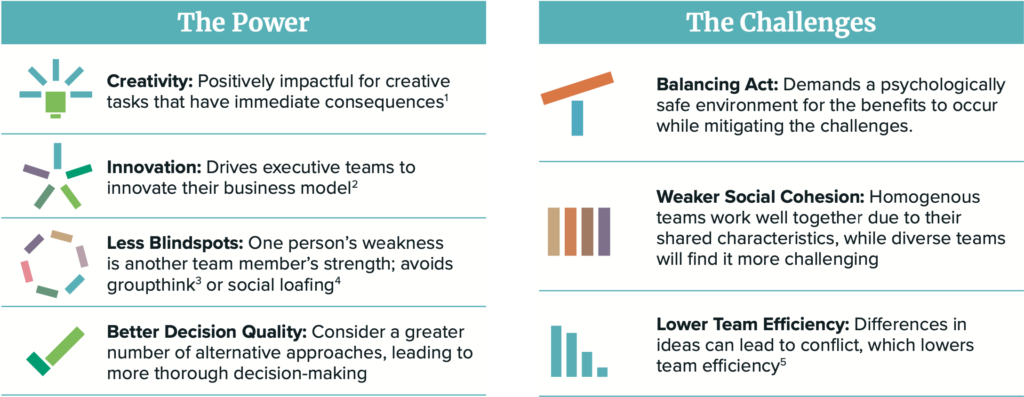At Hedley May, we have observed that only 7% of the leaders we interview and assess fully understand how to unlock cognitive diversity and reap its many benefits. Yet the research is unequivocal: by promoting it within our organisations, that number could be dramatically higher.
The transformative power of cognitive diversity in the workplace isn’t a new discovery, yet in most organisations it’s a concept rather than a reality. Instead, all the focus is on hiring and promoting demographic diversity – focusing on characteristics such as gender, race, socio-economic background and age. But for those pursuing real transformation of their workplaces, a full embodiment of diversity is essential.
The ability to embrace cognitive diversity and harness its potential will become the most important distinction between a great leader and an average one.
So now is the time to ensure our leaders are trained in this field and equipped with the right skills to make sure their organisations truly fulfil their potential.
It’s important to remember demographic diversity doesn’t automatically result in cognitive diversity. Appointments are often made on the projection of how well a candidate will complement the existing culture, resulting in the hiring of like-minded people. Prioritising cognitive diversity recognises the benefit of hiring individuals who think differently to one another, and the organisation itself, offering a range of viewpoints, perspectives and styles of thinking that will challenge the existing norms.
And while great leaders will harness the power of cognitive diversity, average leaders will be overwhelmed by its challenges.
The Rise of Cognitive Diversity
- In the early 2000s, there was a shift towards examining cognitive diversity alongside demographic diversity,as people started to recognise that demographic diversity alone is unable to account for the impact diversity has on a team’s performance
- Cognitive diversity refers to the differences in team members’ psychological characteristics, such as values, personalities, functional expertise and thinking style
- We simply can’t know these attributes on sight, or by asking candidates to tick a box – it takes greater interaction with, or observation of, an individual


